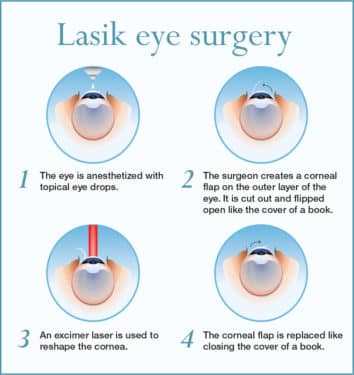Check Out The Important Distinctions In Between Traditional And Laser Cataract Surgery Techniques To Determine Which Option Best Fits Your Vision Needs

Post Developed By-Mosley Hussain
When dealing with cataract surgery, you could wonder about the differences in between typical and laser strategies. Each method has its very own collection of benefits and disadvantages, impacting your recovery and general experience. Understanding these options is crucial for making an informed decision concerning your eye wellness. So, what should you consider when choosing the right strategy for your needs? Allow's explore the details further.
Introduction of Traditional Cataract Surgical Treatment
Standard cataract surgery, typically referred to as phacoemulsification, is a well-established procedure that successfully restores vision by eliminating the over cast lens of the eye.
During this surgical treatment, your surgeon will certainly produce a little laceration in your cornea, permitting access to the lens. Using ultrasound waves, they'll break up the gloomy lens into little fragments, which are after that delicately sucked out.
When the old lens is eliminated, a synthetic intraocular lens (IOL) is dental implanted to recover clear vision. The surgery usually takes less than an hour and is carried out under neighborhood anesthesia, reducing discomfort.
Later, you'll likely see enhancements in your vision as your eye heals. You'll need to adhere to post-operative care directions to guarantee optimum recuperation.
Advantages and Drawbacks of Laser-Assisted Cataract Surgery
While numerous clients benefit from traditional approaches, laser-assisted cataract surgery provides unique advantages and some downsides worth taking into consideration.
One major advantage is precision; the laser develops accurate incisions, which can cause faster recuperation and reduced threat of difficulties. You might likewise experience less pain during the procedure. Furthermore, the laser can break up the cataract a lot more effectively, needing much less energy from the cosmetic surgeon.
Nevertheless, it is essential to weigh these benefits against potential negative aspects. Laser-assisted surgical treatment generally costs greater than traditional approaches, and not all insurance plans cover it.
Moreover, the technology might not be readily available in every facility, which can limit your choices. Ultimately, you'll intend to review these variables with your eye care specialist to establish the best approach for you.
Healing and Aftercare for Cataract Surgery
After cataract surgical treatment, whether it was executed utilizing traditional techniques or laser support, your healing process is important for attaining the best feasible vision end results.
You need to relax for the very first day and prevent arduous activities. Maintain Cataract And Glaucoma Surgery shielded with sunglasses when outdoors, specifically in brilliant light.
It's critical to follow your cosmetic surgeon's guidelines regarding eye decreases and drugs; these assistance avoid infection and reduce inflammation.
You might experience mild discomfort or blurred vision originally, yet this need to boost with time.
Participate in all follow-up appointments to monitor your healing progression. If you see sudden pain, boosted inflammation, or vision adjustments, call your physician quickly.
Complying with these guidelines will certainly support a smooth recovery and enhance your overall outcomes.
Final thought
In conclusion, picking in between typical and laser-assisted cataract surgical treatment depends upon your specific requirements and situations. While https://www.ophthalmologytimes.com/view/procedures-set-new-horizon-refractive-surgery are reputable and reliable, laser strategies use improved accuracy and potentially quicker recuperation. It's essential to review your alternatives with your eye care professional to establish which method matches you best. Inevitably, both approaches aim to recover your vision and improve your quality of life, so you can return to appreciating your day-to-day tasks.

